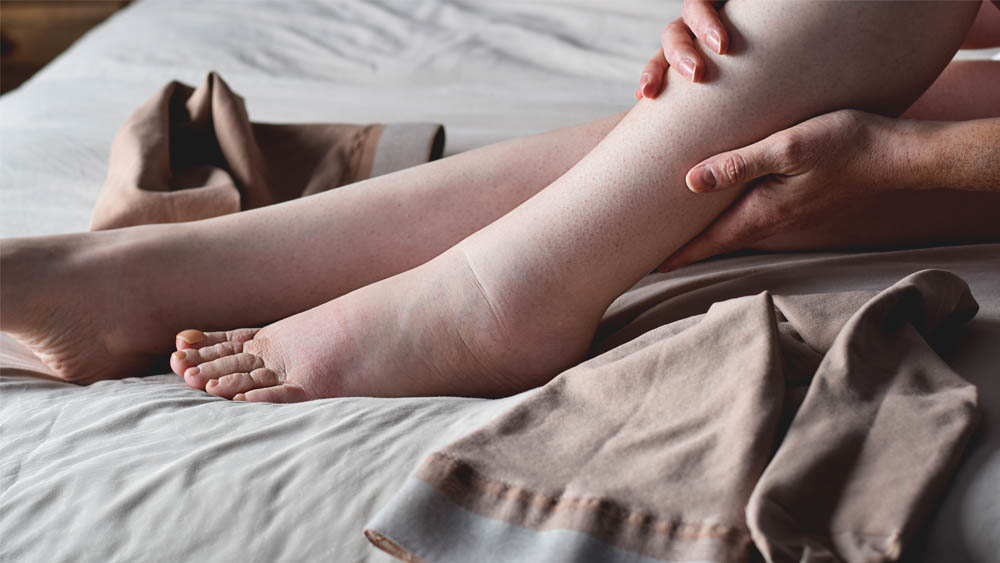Fact or Fiction:
Common Lipedema Myths Debunked
GET DIAGNOSED
Share on facebook
Facebook
Share on twitter
Twitter
Share on linkedin
LinkedIn
Don’t believe everything you hear! Lipedema is a very poorly understood disease that comes with its own unique set of long-held mistruths, myths, and misconceptions. Here, we dispel those commonly-held myths that may be getting in the way of seeking the proper treatment to manage its painful, debilitating symptoms.
Before we separate fact from fiction, let’s start with debunking the most common lipedema myth of all – the long-held belief that lipedema is caused by obesity, laziness, underactivity, and other maligned falsehoods. FACT: Lipedema is “fat that is NOT your fault.” Believed to have genetic origins, lipedema is the dysfunction of fat deposition in the body and is triggered by hormonal events in a woman’s life, such as puberty, pregnancy, and menopause. The disorder results in a progressive, painful accumulation of fat buildup (adipose tissue) in the legs, buttocks, hips, and sometimes, upper arms (in the latter stages). Common characteristics of lipedema include column-like legs where the feet and ankles are oddly spared from the fatty buildup fate the legs suffer, as well as tender-to-the-touch skin, bruising, and swelling. These adverse symptoms commonly impede a lipedema patient’s quality of life, emotions, and social interactions. Though 11% of the female population is affected with lipedema symptoms, 1% of all men have lipedema, too. Let’s take a look at other long-held myths:
- FICTION: You cannot have lipedema AND an eating disorder.
FACT: A person can suffer from both lipedema and anorexia simultaneously. This is usually the result of being misdiagnosed/underdiagnosed as obese. Also, for those who have never sought medical attention for their lipedema, they will usually self-diagnose as being obese and proceed to engage in extreme dieting and excessive exercising to shed the growing pounds and lumpy fat to the lower body, but to no avail. Lipedema fat doesn’t respond to diet and exercise, hence women who suffer from lipedema and anorexia will find their upper bodies are extremely thin and well-defined, while their bottom half continues to take on a column-like shape and legs riddled with lumpy pockets of fat. It can be a vicious, frustrating cycle.
- FICTION: Lipedema is easy to treat.
FACT: This couldn’t be further from the truth! The mental and physical effects of lipedema that plague its victims have left the medical industry scratching its collective head, leaving the mysterious disease still under intense research without any definitive cure – just customized treatments. Because lipedema doesn’t respond to diet and exercise, the only long-term solution is surgical intervention, which isn’t always viable for every patient, making lipedema an unending, challenging disorder.
- FICTION: Liposuction is the best treatment for lipedema.
FACT: Traditional liposuction will not help reduce lipedema fat, as the enlarged, hardened fat nodules of lipedema need to be extracted manually through a specialized technique known as Manual Lipedema Extraction or MLE.
- FICTION: Lipedema is a form of cellulite.
FACT: Often used interchangeably, cellulite and lipedema are NOT the same things and both disorders have completely different characteristics. Let’s break down the battle of the bulges: Cellulite is categorized as an accumulation of fatty deposits just beneath the skin’s surface that pushes through the underlying connective tissue, resulting in visible dimpling or puckering, giving the skin an “orange peel” appearance. Commonly referred to as “cottage cheese thighs,” cellulite doesn’t discriminate. The dreaded dimpling affects nearly 90% of all women of all body types, irrespective of body composition or fitness level. While painfully annoying, cellulite is a superficial cosmetic woe that doesn’t pose any health risks. Lipedema, on the other hand, develops when fat deposits heavily beneath the skin’s surface, much like its cellulite counterpart, but leaves the outlying skin extremely sensitive, cold and painful to the touch, and spongy. If left untreated, those who suffer from lipedema will often see a progression from stage one to stage four, leaving the skin to be become easily bruised and veiny, causing immense personal discomfort, and ultimately, limiting mobility and diminishing enjoyment of life. Untreated stage four progression of lipedema can also adversely affect the body’s crucial lymphatic system, leading to a myriad of other undesirables. Not to mention, asymmetry of the legs and lower half of the body as previously mentioned. Cellulite simply results in a dimpled derriere, tummy, thighs, and buttocks, and usually diminishes or exacerbates depending on weight loss and weight gain. Though there is no cure for cellulite as well, the orange peel effect does respond to proper diet, exercise, massage, and adequate hydration. We hope this finally sets the record straight on these two commonly confused fat accumulation disorders, though intrinsically linked.
- FICTION: Compression garments, lymphatic drainage massage, and other superficial treatments will limit lipedema’s progression.
FACT: Yes and no. There are no guarantees wearing compression garments, undergoing regular sessions of lymphatic drainage massage, and practicing other non-surgical therapies will hinder the progression of lipedema. These non-surgical therapies may buy you some time, but ultimately, water-assisted liposuction with MLE is currently the only proven, long-term antidote to your lipedema symptoms.
- FICTION: Lipedema and lymphedema are the same.
FACT: They’re related but very different. Lymphedema adversely affects the lymph nodes by obstructing lymph flow that leads to painful buildup and subsequent swelling. Lipedema, on the other hand, is a fat deposition disorder that leads to a painful buildup of FAT. One is a buildup of fluid; the other fat. However, if left untreated, lipedema can lead to lymphedema and a host of other health challenges that should never be ignored. Both lipedema and lymphedema are worsened by obesity.
We hope this article sheds light on some of the most common misconceptions surrounding lipedema. Be sure to check in with our blog regularly, as we continually seek to update the lipedema community with the latest news on advancements, helpful tips, common questions, and other information-rich material.
To learn more, please contact our Beverly Hills, California office to schedule a consultation with any of our highly trained specialists.

